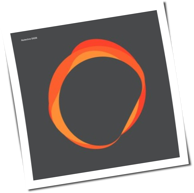Well that is a tough choice. In no particular order; 1 Benjamin Britten - Four Sea Interludes from 'Peter Grimes'; https.
- Autechre Max Patch
- Autechre Max Patch Review
- Autechre Max Patch Reviews
- Autechre Max Patch Side Effects
- Autechre Max Msp Interview
From Academic Kids
Autechremax.jpg
Max is a graphical development environment for music and multimedia developed and maintained by San Francisco-based software company Cycling'74. It has been used for over fifteen years by composers, performers, software designers, and artists interested in creating interactive software.
- Explore floorvan's photos on Flickr. Floorvan has uploaded 3528 photos to Flickr.
- EP7 was their first release which had prominent amounts of Max/MSP, and then Confield. Everything on Chiastic Slide was done without Max, and I think LP5 as well. Interestingly enough, Draft 7.30 was done without Max except for Reniform Puls. The first album which was done almost entirely (see row 206) in Max was Oversteps.
The Max program itself is highly modular, with most routines existing in the form of shared libraries. An API allows third-party development of new routines (called 'external objects'). As a result, Max has a large userbase of programmers not affiliated with Cycling'74 who enhance the software with commercial and non-commercial extensions to the program. Because of its extensible design and graphical interface (which in a novel way represents the program structure and the GUI as presented to the user simultaneously), Max is widely regarded as the lingua franca for developing interactive music performance software.
Max was originally written by Miller Puckette at IRCAM in the 1980s to give composers access to an authoring system for interactive computer music. In the early 1990s a commercial version of the program (developed and extended by David Zicarelli) was released by Opcode Systems. The current commercial version of Max has been distributed by Zicarelli's company, Cycling'74, since 1999.
Max has a number of extensions and incarnations; most notably, a set of audio extensions to the software appeared in 1997. Called MSP, this 'add-on' package for Max allowed for the manipulation of digital audio signals in real-time, allowing users to create their own synthesizers and effects processors (Max had previously been designed to interface with hardware synthesizers, samplers, etc. as a 'control' language using MIDI or some other protocol). A second major package called Jitter was released in 2003, adding real-time video, 3-D, and matrix processing capability to the software. Wellcraft parts manual.
In addition, a number of sibling and Max-like programs exist. IRCAM developed and maintained a concurrent version of Max for the NeXT (and later SGI and Linux), called Max/FTS (FTS standing for 'Faster Than Sound', and being analogous to a forerunner to MSP enhanced by a hardware DSP board on the computer). A later version of the program was developed in Java (jMax) and is open-source. Puckette himself released an entirely re-designed program in the mid-1990s called Pd ('pure data', alternately 'public domain'), which has a number of fundamental differences from the IRCAM original. Native Instruments markets a similar software called Reaktor, which is more object-oriented than Max, and uses what could be thought of as larger building blocks. Reaktor is generally considered easier to use and learn than Max.

Max is named for Max Mathews, and can be considered a descendant of MUSIC, though its graphical nature disguises that fact. Additionally, the real-time image processing capability of Max also makes it the first MUSIC-N program capable of doing other things than music.

Autechre Max Patch
A large number of people use Max, even if they aren't aware of it. Max documents (called patchers) can be bundled into standalone applications and distributed free or sold commercially. In addition, Max can be used to author audio plug-in software for major audio production systems.
With the increased integration of laptop computers into live music performance (in electronic music and elsewhere), Max/MSP and Max/Jitter have received quite a bit of attention as the development environment of choice for those serious about laptop music / laptop video performance.
Notable Artists
Many other artists use Max/MSP/Jitter, but prefer not to mention it. For more on this subject, see this discussion (http://www.synthesisters.com/hypermail/max-msp/Nov03/7656.html) on the Max/MSP mailing list. Ambx drivers windows 10.
Autechre Max Patch Review

Autechre Max Patch Reviews
External links
Autechre Max Patch Side Effects
- Home Page of Cycling'74 (http://www.cycling74.com)
- Pd Home Page (http://iem.at/pd/)
- jMax project page (http://sourceforge.net/projects/jmax/) on Sourceforge
- Max Objects Database (http://www.maxobjects.com/) This site is designed to find objects from Max universe (Max/MSP, Jitter,..)